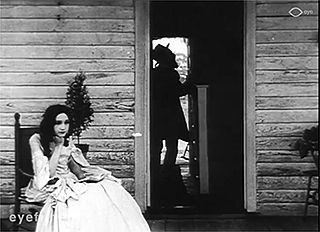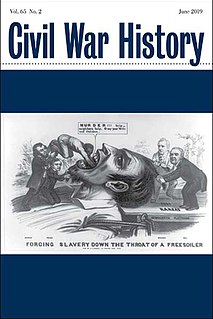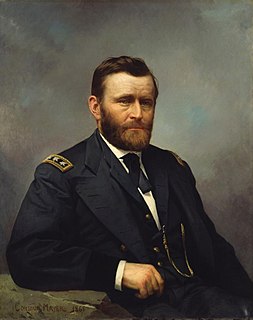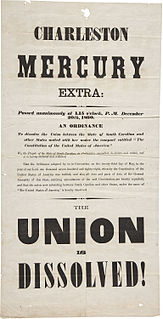 W
WThe American Civil War was a civil war in the United States from 1861 to 1865, fought between northern states loyal to the Union and southern states that had seceded to form the Confederate States of America. The civil war began primarily as a result of the long-standing controversy over the enslavement of Black people. War broke out in April 1861 when secessionist forces attacked Fort Sumter in South Carolina, just over a month after Abraham Lincoln had been inaugurated as the President of the United States. The loyalists of the Union in the North, which also included some geographically western and southern states, proclaimed support for the Constitution. They faced secessionists of the Confederate States in the South, who advocated for states' rights to uphold slavery.
 W
WWashington, D.C., during the American Civil War was the center of the Union war effort, which rapidly turned it from a small city into a major capital with full civic infrastructure and strong defenses.
 W
WEdward (William) Black (1853–1872) was a drummer boy for the Union during the American Civil War. At twelve years old, his left hand and arm were shattered by an exploding shell. He is considered to be the youngest wounded soldier of the war.
 W
WBy a Woman's Wit is a 1911 American silent film produced by Kalem Company. It was directed by Sidney Olcott with Jack J. Clark and Alice Hollister in the leading roles. A copy is kept in the Desmet collection at Eye Film Institute (Amsterdam).
 W
WCivil War History is an academic journal of the American Civil War. It was established in 1955 at the State University of Iowa and is published quarterly by Kent State University Press. Topics covered in this journal include slavery and abolition, antebellum and Reconstruction politics, diplomacy, social and cultural developments, and military history. Notable contributors include Stephen Ambrose, Charles B. Dew, Gary W. Gallagher, James M. McPherson, Mark E. Neely Jr., James I. Robertson Jr., and T. Harry Williams.
 W
WThe commemoration of the American Civil War is based on the memories of the Civil War that Americans have shaped according to their political, social and cultural circumstances and needs, starting with the Gettysburg Address and the dedication of the Gettysburg cemetery in 1863. Confederates, both veterans and women, were especially active in forging the myth of the Lost Cause of the Confederacy.
 W
WThe Confederate Conscription Acts, 1862 to 1864, were a series of measures taken by the Confederate government to produce the manpower to fight the American Civil War.
 W
WA drunkard's cloak was a type of pillory used in various jurisdictions to punish miscreants.
 W
WFarmers is an unincorporated community and census-designated place in Rowan County, Kentucky, United States. Its population was 284 as of the 2010 census. Farmers has a post office with ZIP code 40319. U.S. Route 60 passes through the community.
 W
WFor Love of an Enemy is a one-reel 1911 American motion picture produced by Kalem Company and directed by Sidney Olcott. A war story detailing the adventures and the love affair of a Union spy in the Confederate lines.
 W
WForeign enlistment in the American Civil War largely favored the Union, which was far more successful in attracting international volunteers. Nonetheless, thousands of immigrants and mercenaries served with the Confederacy.
 W
WHundreds of historians and biographers have written biographies and historical accounts about the life of Ulysses S. Grant and his performance in military and presidential affairs. Very few presidential reputations have shifted as dramatically as Grant's.
 W
WJayhawkers and red legs are terms that came to prominence in Kansas Territory, during the Bleeding Kansas period of the 1850s; they were adopted by militant bands affiliated with the free-state cause during the American Civil War. These gangs were guerrillas who often clashed with pro-slavery groups from Missouri, known at the time in Kansas Territory as "Border Ruffians" or "Bushwhackers." After the Civil War, the word "Jayhawker" became synonymous with the people of Kansas, or anybody born in Kansas. Today a modified version of the term, Jayhawk, is used as a nickname for a native-born Kansan, but more typically for a student, fan, or alumnus of the University of Kansas.
 W
WJewish Americans have served in the United States armed forces dating back to before the colonial era, when Jews had served in militias of the Thirteen Colonies. Jewish military personnel have served in all branches of the armed forces and in every major armed conflict to which the United States has been involved. According to the U.S. Department of Defense, as of 2006 there were currently 3,973 known Jewish servicemen and servicewomen on active duty.
 W
WPersimmon regiment was a term used during the American Civil War to describe a regiment that, in its history, stopped marching for a brief while to consume persimmons, a type of fruit popular in the Southern United States. Three different regiments in the Union army acquired the nickname.
 W
WTillie Pierce was the author of At Gettysburg, or What A Girl Saw and Heard of the Battle: A True Narrative." Published more than a quarter of a century after the Battle of Gettysburg, the book recounted her experiences during the American Civil War.
 W
WSt. Alban’s Episcopal Church is an Episcopal church and cemetery located in Bovina, Mississippi. It was formed by cotton farmers along the Big Black River in 1857. The church was requisitioned as a hospital by Union forces during the American Civil War in May 1863. It was left in ruin by the Union forces, but eventually rebuilt with assistance from St. Alban's Episcopal Church in New York. St. Alban’s continues to hold services as an active parish, located in the country on Warriors Trail between Vicksburg and Jackson.
 W
WThe Second Founding: How the Civil War and Reconstruction Remade the Constitution is a non-fiction book written by Eric Foner and published by W.W. Norton & Company in 2019. The book recounts the history of the Reconstruction era amendments to the U.S. Constitution and the historical efforts by the U.S. Supreme Court and certain states to undermine these amendments, as well as efforts to undermine the lawful right for all citizens to vote and enjoy full citizenship. Foner also demonstrates the relevance of this history to our present day.
 W
WThe Declaration of the Immediate Causes Which Induce and Justify the Secession of South Carolina from the Federal Union, also known as the South Carolina Declaration of Secession, was a proclamation issued on December 24, 1860, by the government of South Carolina to explain its reasons for seceding from the United States. It followed the brief Ordinance of Secession that had been issued on December 20. The declaration is a product of a convention organized by the state's government in the month following the election of Abraham Lincoln as U.S. President, where it was drafted in a committee headed by Christopher Memminger. The declaration stated the primary reasoning behind South Carolina's declaring of secession from the U.S., which was described as "increasing hostility on the part of the non-slaveholding States to the Institution of Slavery".
 W
WThe Weston Bluff Skirmish Site, on a bluff over the Ohio River just north of Weston, Kentucky, was site of an American Civil War skirmish on June 21, 1864. A 10 acres (4.0 ha) area was listed on the National Register of Historic Places in 1998.